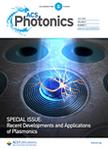版权所有:内蒙古大学图书馆 技术提供:维普资讯• 智图
内蒙古自治区呼和浩特市赛罕区大学西街235号 邮编: 010021

作者机构:Inha Univ Dept Ind Engn Incheon 22212 South Korea Inha Univ Dept Mat Sci & Engn Incheon 22212 South Korea Inha Univ Convergence Ctr 3D Incheon 22212 South Korea
出 版 物:《ACS PHOTONICS》 (ACS Photonics)
年 卷 期:2024年第11卷第8期
页 面:2938-2945页
核心收录:
基 金:Technology Innovation Program - Ministry of Trade, Industry& Energy (MOTIE),Korea Digital Research Innovation Institution Program through the National Research Foundation of Korea (NRF) - Ministry of Science and ICT [RS-2023-00283597] Basic Science Research Program through the National Research Foundation of Korea (NRF) - Ministry of Education [2022R1A6A1A03051705]
主 题:machine learning algorithm organic light-emittingdiode optical modeling
摘 要:Developing organic light-emitting diodes (OLEDs) with a desired emission color and efficiency involves complex efforts in material selection and optimizing the device structure due to their multilayered architectures. Notably, the cavity structure in the OLEDs allows for a wide range of emission colors and efficiencies based on the thicknesses and optical constants of the layers, even within a specific material set. Conventional approaches to achieving optimized OLED designs can prove to be financial-, labor-, and time-intensive for researchers, considering the multitude of combinations necessary for the complex, multilayered structure. To address these challenges, this study introduces a novel machine learning (ML) algorithm capable of intelligently predicting the ideal device structure for OLEDs, considering organic layer thicknesses and refractive indexes. The rule-based ML algorithm exhibits impressive accuracy, with an error margin of less than 0.5% for red-, green-, and blue-emitting OLEDs. These findings emphasize the potential of the ML algorithm as an invaluable solution to streamline the process of obtaining optimized OLED designs, offering substantial time and resource savings with high precision.